The thought of driving a van for the first time can be quite daunting. But trust us, it’s actually a lot easier than you may think.
Most vans are just like regular cars, built with features like ABS brakes, stability control systems and steering-wheel airbags. But are a few differences you need to be aware of, including how large the vehicle is, how this affects steering and braking, alongside extra mirrors they have.
That’s why we’ve put together 10 tips on how to drive a van to check out before you hire a van for your next job. We’re here to help with speed and height considerations and helpful advice on how to load your van safely, so you can feel confident when you get behind the wheel.
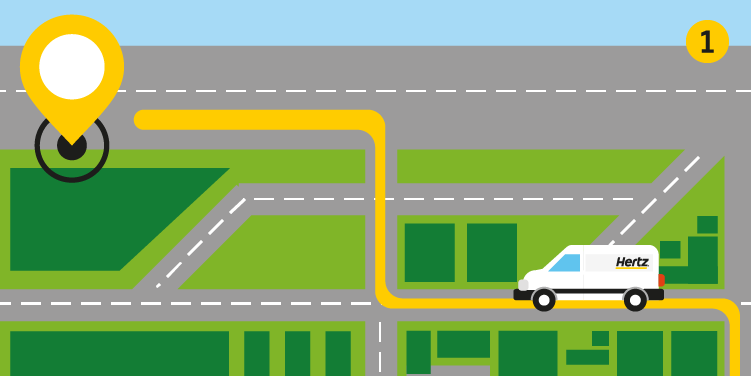
1. Know how you’re getting from A to B
Planning and preparation is key when driving a van for the first time. Before you switch the ignition on, make sure you’re comfortable in your seat. Check your seat position and adjust your mirrors to help avoid getting any aches and pains on long journeys.
You’ll also need to get used to the difference in visibility when driving a van. As you’re positioned much higher, you’ll need to alter the height of your seat and mirror accordingly.
It’s important to know how you’re getting to your destination too. Make sure you have your route – and an alternative route – mapped out on the sat-nav. Driving along unknown roads or getting lost can send your stress levels through the roof and in turn impact on your safety.
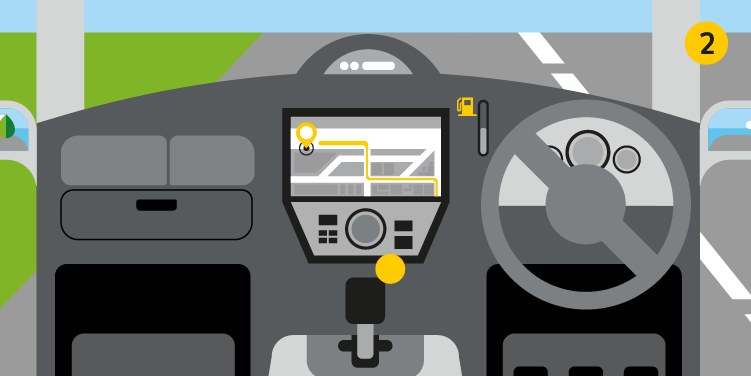
2. Getting in gear
It’s also sensible to spend some time getting used to the controls and your gearbox before setting off. Remember that most vans have six gears, as opposed to the standard five gear system in many cars.
Practice moving through the gears, so you feel confident when you’re out driving long distances. The extra gear is nothing to worry about, but should be used if you’re driving on the motorways to help save fuel.
It's also important to have a look through all of the van controls to get familiar with how it all works – so you’re not distracted while driving, trying to figure it out. Check you know how to work the lights, wipers, heating, A/C and radio before hitting the road.
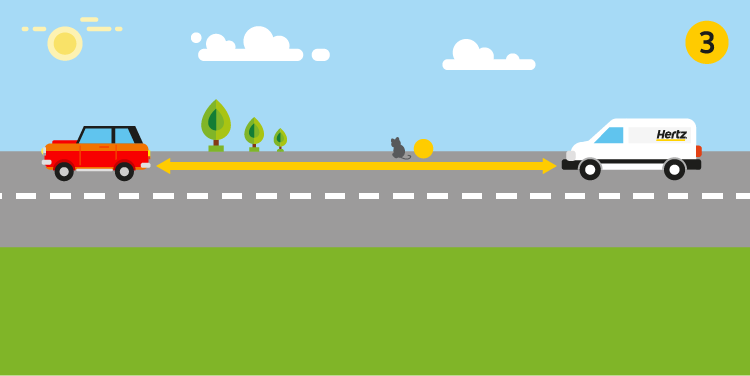
3. Watch your speed
As with driving a car, always scan the road ahead for hazards and obstacles and adjust your driving to suit. Because a van is a much larger and heavier vehicle, it’s important to alter your driving style to match, as there’s more weight to bring to a stop when braking.
A study from Volkswagen reports that a heavy, packed van needs an additional two metres to stop, compared to an empty van – even when driving 30mph. This distance grows to five metres, if you double the speed to 60mph.
It’s essential to keep an eye on your speed and consider the extra braking distance needed if you have a full load in the back of the van. Be sure to leave a safe distance between your van and the vehicle in front. Remember it’s not a race, so make sure to bring your speed down and leave more space for braking than you would in a conventional car.
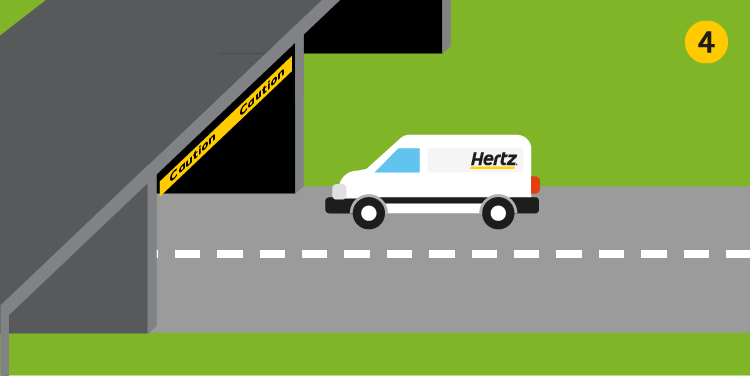
4. Watch out for the roof
Most vans are much taller than the average car, meaning that you need to consider height restrictions when driving your van. Find out the exact size and height of your van, so you know whether you can squeeze into that multi-storey car park or not.
You likely won’t need to worry about height for the first three rungs up the Hertz van hire ladder, as they’re comparable in size to conventional cars. However, the largest I4 group vans may be too tall for the very lowest bridges and other overhanging obstacles.
Underpasses can also pose a risk if you’re driving a particularly tall van, so be sure to plan your journey to avoid these. It’s also important to know the width of your van, as you can work out how much space you take up on the roads and which parking spaces you can fit into.
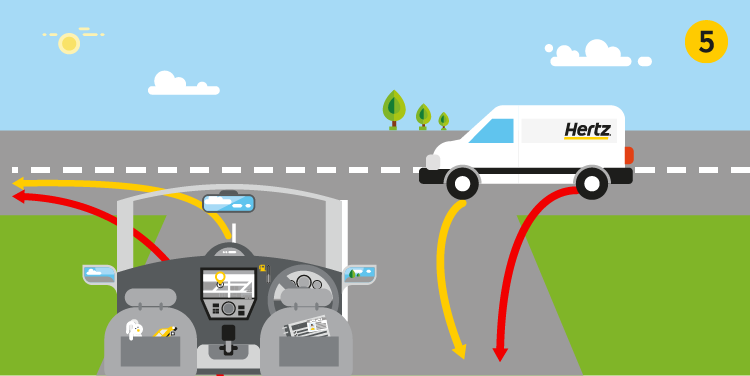
5. Take care when turning corners
Width can also be an issue for the larger van classes, especially when driving around narrow residential areas. You may need to give yourself more room to manoeuvre then you would with the average car.
Be sure to use your external mirrors when turning, to get a clear view of the space around you. It sounds obvious, but the bigger the van, the more space you need to leave as you enter a corner or make a turn around an obstacle.
Remember, there’s much more vehicle behind you compared to what you’re used to. Again, it’s all about observation. If in doubt, slow down or come to a complete stop to assess any obstacles and be careful not to take corners too quickly.
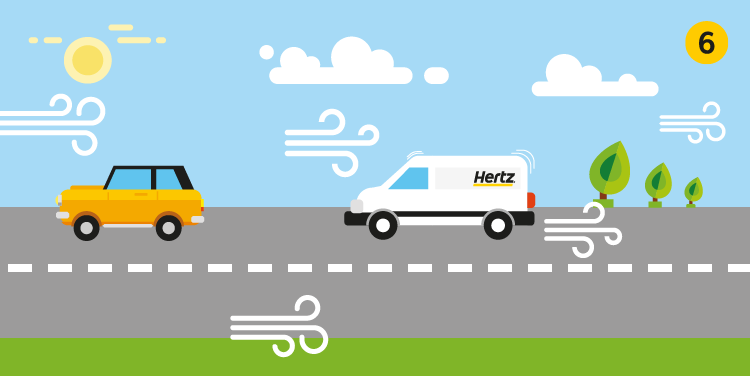
6. Consider the weather
It’s important to consider weather conditions before you start your journey. For the most part, vans perform as well as cars in poor weather, but they require a lower speed and need larger margins when braking.
High winds can be hazardous when driving a van, especially if your van is empty. That’s because they have a higher centre of gravity and will be affected by any windier conditions more than a car, that is lower to the ground.
The best tip for driving in windy conditions is to slow down slightly, keep your eyes on the road and keep a safe distance from other vehicles – especially high-sided buses or trucks. As always, avoid driving in adverse weather conditions wherever possible, especially in a vehicle you’re not used to.
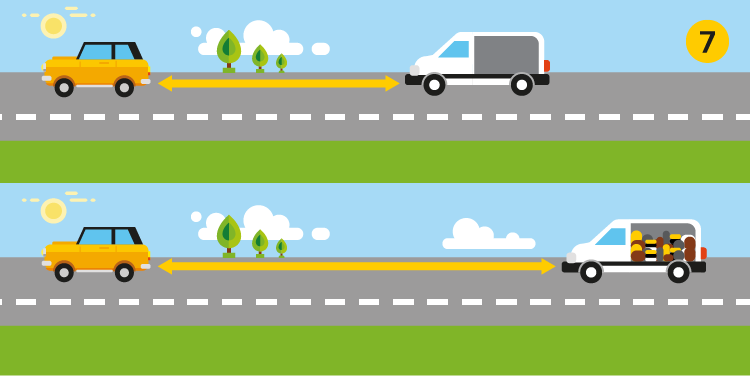
7. Driving a fully loaded van
It’s important to be aware of the differences between driving an empty and fully loaded van. For starters, the large storage bay and carrying capacity means a van can accommodate very heavy loads. This makes a significant difference to all aspects of performance, from acceleration to braking and handling.
A top van driving tip when carrying a heavy load is to err on the side of caution and leave even greater distances to other road vehicles as you’ll need longer to come to a standstill. A loaded van has a stiffer suspension, so it’s wise to avoid potholes as you van will hit them harder.
Each van also has a weight limit, which is the maximum amount it can weigh when it’s fully loaded. The amount can be found on your van identification number (VIN) plate.
If you exceed this limit, it can affect the vehicles performance, not to mention your safety. You could also be fined or receive a court summons, so please take care to check this before travelling.
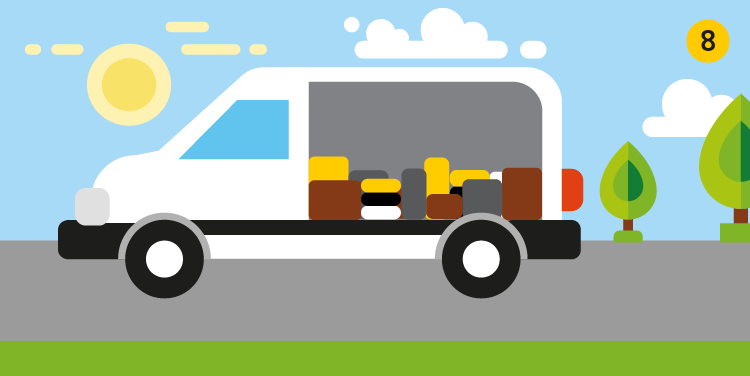
8. Load the van securely and evenly
An overloaded or poorly loaded van can be dangerous. Take note of the van’s maximum load capacity and make sure that all items and materials are loaded securely to avoid any personal injury.
It’s also important to spread the contents evenly and as low as possible in the bay to ensure safety and to minimise damage. Loose materials can be a serious hazard and you should tie things down where you can, using appropriate securing apparatus.
In serious cases, moving items could destabilise the van and cause tipping. Similarly, the higher items are stored, the more likely they are to cause stability problems.
There is also a larger risk of these items coming lose and damaging the vehicle. Before packing and driving your van for the first time, place the heaviest items at the bottom to help with weight distribution and to keep the van stable.
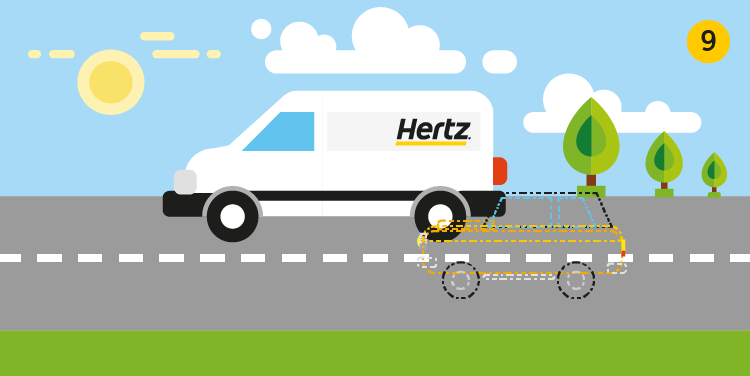
9. Be aware of blind spots
Before starting your journey, check your visibility and make yourself aware of any blind spots. Ensure that you adjust your wing mirrors correctly, so you can see blind spots around the van. You can check this by asking a friend to walk around the vehicle, so you can see when they go out of sight and alter the position of your mirrors accordingly.
Rearward visibility is another major difference between vans and cars. Hertz’s smallest van group, which includes the V.W Caddy, is very similar to a car in this regard – aside for the rear-quarter or the over-the-shoulder view.
Here, a steel panel replaces the rear side windows. As a consequence, it’s important to be aware of the blind spots over both shoulders that occur when merging into lanes.
The larger vans in the Hertz fleet have the same rear-quarter blind spots and limited visibility, thanks to the omission of the centre rear-view mirror. Instead, you must rely upon a pair of extra-large wing mirrors.
Just remember, the larger a van is, the more likely it is that cars and other small vehicles following closely behind may be partially or entirely obscured.
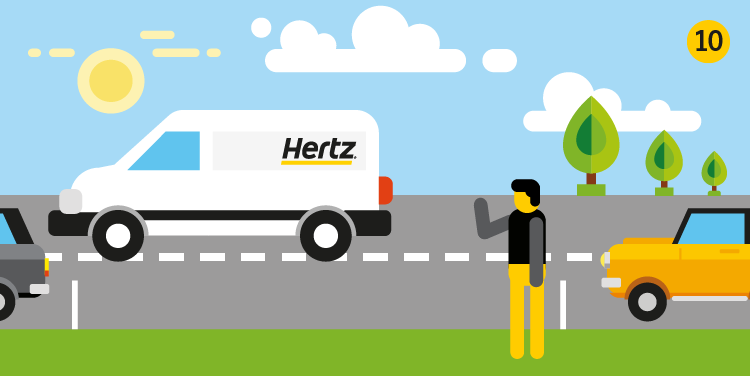
10. Take a friend to help you park
There can be challenges when it comes to parking a van. Again, the larger the van, the more adjustments you’ll need to make compared to parking a standard car.
The smaller group A4 vans are just like parking a car. However, the larger models in groups E4 and above require more care. Having a co-driver on hand helps significantly, as they can get out and help guide you safely into parking spaces. If you’re travelling solo, simply take it step by step.
A good method where traffic conditions allow is to stop the van completely, get out and assess the space fully. You’ll then be able to make better sense of both the space available and what you can see in the wing mirrors.
If the location is busy, don’t allow other vehicles to pressure you into rushing. Take your time and don’t feel embarrassed to abort and retry if you aren’t confident the van is lining up correctly.
Ready to put these van driving tips into practice? Start your journey today and book van hire online with Hertz.

